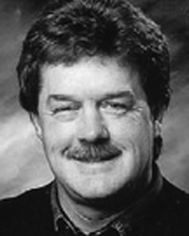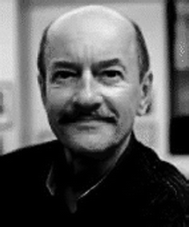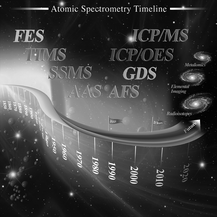Metallomics—the future of atomic spectroscopy?
Metallomics is defined as the study of metals and metal species, and their interactions, transformations, and functions in biological systems. The full complement of metals and metal moieties (free and bound) is accordingly known as the metallome. The terms are relatively new ones, first coined by R. J. P. Williams of Oxford University and Hiroki Haraguchi of Nagoya University early in the present millennium. Metallomics is a new moniker for the field of bioinorganic chemistry, extending and broadening that discipline much as genomics has done for genetics, and is appositely harmonious with other ‘omics’ terms like genomics, proteomics, and metabolomics. Metallomics is also distinguished from other terms (e.g., speciation) by consideration of the global role of all metals/metalloids in a system. | ||
| Plate1 Dr. D. W. Koppenaal. | ||
Readers of this journal will be concerned about the future of atomic spectrometry as a vibrant scientific discipline and we feel it is prudent to look to the future and to new vehicles to help propel the field forward. Metallomics may well be one such vehicle (as are others such as elemental imaging and radioisotopic analysis, all three being indicated as such on the journal’s new Atomic Spectrometry Timeline cover design [see below]). This focus is certainly congruent with the vision of the 21st century being the biology century, and would appear to fit with current funding trends that heavily favor the biological/medical sciences.
Metallomics could be considered a “grand challenge” in the field of atomic spectrometry. In most biological systems, metals can exist is an astonishingly broad variety of forms, from free ions to metalloproteins, from tightly bound species to loosely held complexes. Further, the range of concentrations of metallic species in biological samples is a staggering 1014, sure to tax any instrumental system. Moreover, it has been argued that virtually the entire periodic table can be found in biological materials. Lastly, the matrix of metallomics samples is exceedingly complex. Although conventional approaches (e.g., LC-ICP-MS, CE-ESI-MS) are already being applied to metallomics, new techniques are being devised and even more powerful ones will be needed in the future.
 | ||
| Plate2 Professor G. M. Hieftje. | ||
Metallomics is not new to this journal; indeed many of the papers in recent-year issues have metallomic bearings, and a special issue on this topic was published in 2004 (Volume 19, Issue 1, Norbert Jakubowski, Ryszard Lobinski and Luc Moens guest editors). Several other metallomics events are imminent, including the commissioning of a 2nd Metallomics special issue of this Journal in 2007 (David W. Koppenaal, Gary M. Hieftje, guest editors, please contact if interested in contributing). An International Symposium on Metallomics will be held in Nagoya, Japan, from November 28 to December 1, 2007 (see http://www.ism2007.org for additional information), notable since this meeting will be the first dedicated symposium on this topic. Also, a new Metallomics Center of the Americas is being established at the University of Cincinnati under the leadership of Professor Joseph A. Caruso, and in partnership with Agilent Technologies [http://www.che.uc.edu/metallomics/]. This Center will promote the development and application of novel analytical instrumentation concepts for metallomics studies, assisting with the formation of a national/international consortium dedicated to such pursuits.
It is certainly apparent that metallomics is a vogue topic, and one that can help assimilate atomic spectrometry into the biological sciences in a fully meaningful way. When one considers the important role of metalloproteins and metalloenzymes in biological processes (e.g., respiration, photosynthesis) and the fact that 30% of proteins contain metals, this importance becomes all the more obvious. Metallomics may be a future, perhaps the future, of atomic spectrometry. JAAS looks forward to helping to pave that path. Please consider publishing your metallomics research in this journal!
David W. Koppenaal
Pacific Northwest National Laboratory
Gary M. Hieftje
Indiana University
| This journal is © The Royal Society of Chemistry 2007 |

